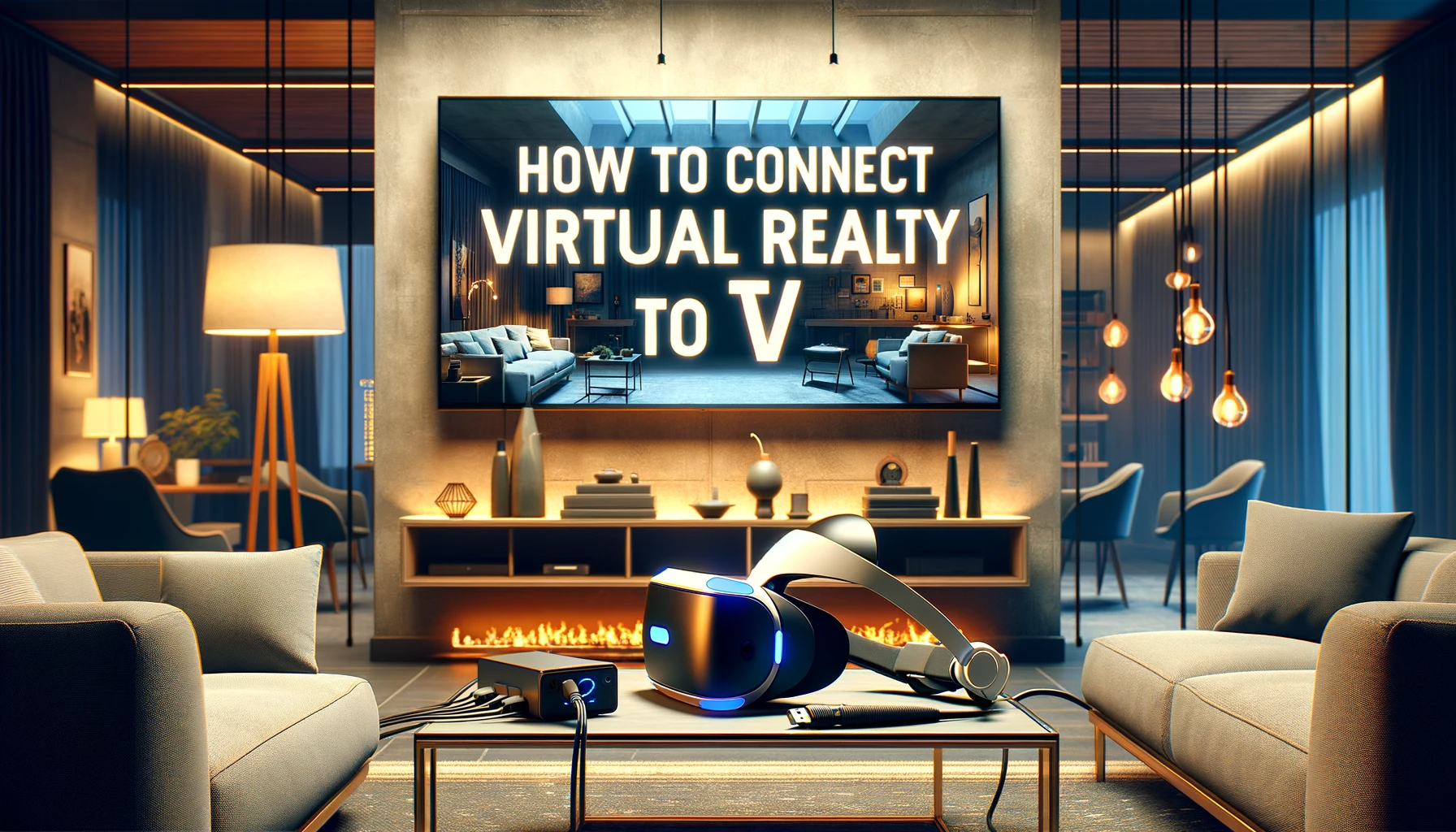How to Connect Virtual Reality to TV: A Not-So-Virtual Guide
How to connect virtual reality to TV, the wonders of virtual reality (VR)! You’ve got your fancy VR headset, and you’re ready to dive into digital worlds. But wait, you want to share this awesome experience with your friends and family, right? And what better way to do that than by connecting your VR to the big screen TV in your living room? Let’s embark on this tech-savvy journey with a mix of humor and helpfulness.
Understanding the Basics: VR Meets TV
Before we dive into the nitty-gritty, let’s set the stage. VR headsets are like the gatekeepers to other worlds, but TVs are like the grand stages where these worlds can be showcased. Combining the two? Now that’s a recipe for a fun night in!
VR Headsets & Compatibility
Not all VR headsets are made equal. Some are like the cool kids of tech town (think Oculus Rift, HTC Vive), while others are more like the friendly neighbors (hello, Google Cardboard). Make sure your headset and TV can actually have a meaningful conversation.
TV Requirements
Your TV is more than just a screen; it’s the window to your VR soul. Ensure it has the right ports (HDMI, for instance) and, ideally, a decent screen size. After all, size does matter in the world of VR!
The Connection Odyssey: Step-by-Step Guide
Connecting your VR to your TV is like a space mission, but instead of rockets, we have cables and settings. Let’s get technical, but not boring!
The Cable Chronicles
Most VR headsets need an HDMI cable to chat with your TV. It’s like their love language. Find that HDMI port on your headset (if it exists) and connect it to your TV. No HDMI? Time to get creative with adapters.
Wireless Wonders
For the tech-savvy and cable-haters, some VR systems offer wireless streaming. Apps like Chromecast can beam your VR experience to your TV with the magic of Wi-Fi. It’s like Hogwarts, but for VR.
Adjusting Settings
Sometimes, it’s not just plug and play. Dive into the settings of your VR system and your TV. Look for mirroring options or external display settings. It’s like playing hide and seek with your preferences.
Sound Saga
Don’t forget about sound! Some VR systems send audio to the headset by default. You might need to change audio output settings to ensure your TV isn’t just miming the action.
Troubleshooting: When Tech Rebels
Even in a perfect digital world, things can go wrong. Here’s how to troubleshoot common VR-TV connection issues:
No Signal” Nightmares
Make sure your cables aren’t playing hide and seek. Check the connections and maybe even try a different HDMI port on your TV.
Fuzzy or Warped Images
Like a bad hair day, sometimes the picture just isn’t right. Adjust the resolution settings on your VR device and TV to match.
Safety First: A Word of Caution
Combining VR with a TV audience can be fun, but remember, safety first! Make sure there’s enough space around you. We don’t want a virtual trip to turn into a real trip to the emergency room.
Virtual Reality Near Me: Finding Your VR Haven
Now, let’s talk about finding virtual reality experiences near you. It’s like a treasure hunt, but instead of a map, you’ve got the internet.
Google is Your Friend
A simple search for “Virtual Reality near me” can unearth a trove of local VR arcades and experiences. It’s like asking a wise oracle.
Social Media Shout outs
Social media platforms can be goldmines for VR events and communities. Look for local groups or pages dedicated to VR.
Tech Meetups and Events
Keep an eye on local tech meetups or events. They often feature VR experiences, and it’s a great way to meet fellow VR enthusiasts.
Retail Stores & Demos
Some electronic stores offer VR demos. It’s like a test drive, but way cooler.
Library and Educational Programs
Surprisingly, many libraries and educational institutions now offer VR experiences. Who said libraries are just for books?
Conclusion: Your VR-TV Odyssey Awaits
Connecting your VR headset to your TV is like opening a portal to shared virtual adventures. Remember, the journey might require some tech-savviness, a dash of patience, and a sprinkle of humor. And when it comes to finding VR experiences near you, let curiosity be your guide. Now, go forth and immerse yourself in the wonders of virtual reality, both at home and in the wild!
FAQs: About Connecting Virtual Reality to TV
FAQ titleCan I connect any VR headset to my TV?
Do I need special cables to connect my VR headset to my TV?
How can I wirelessly stream VR content to my TV?
What should I do if the picture quality is poor when I connect my VR to the TV?
Is it safe to play VR games with the action displayed on the TV?
Read More About: how to screen record on android
